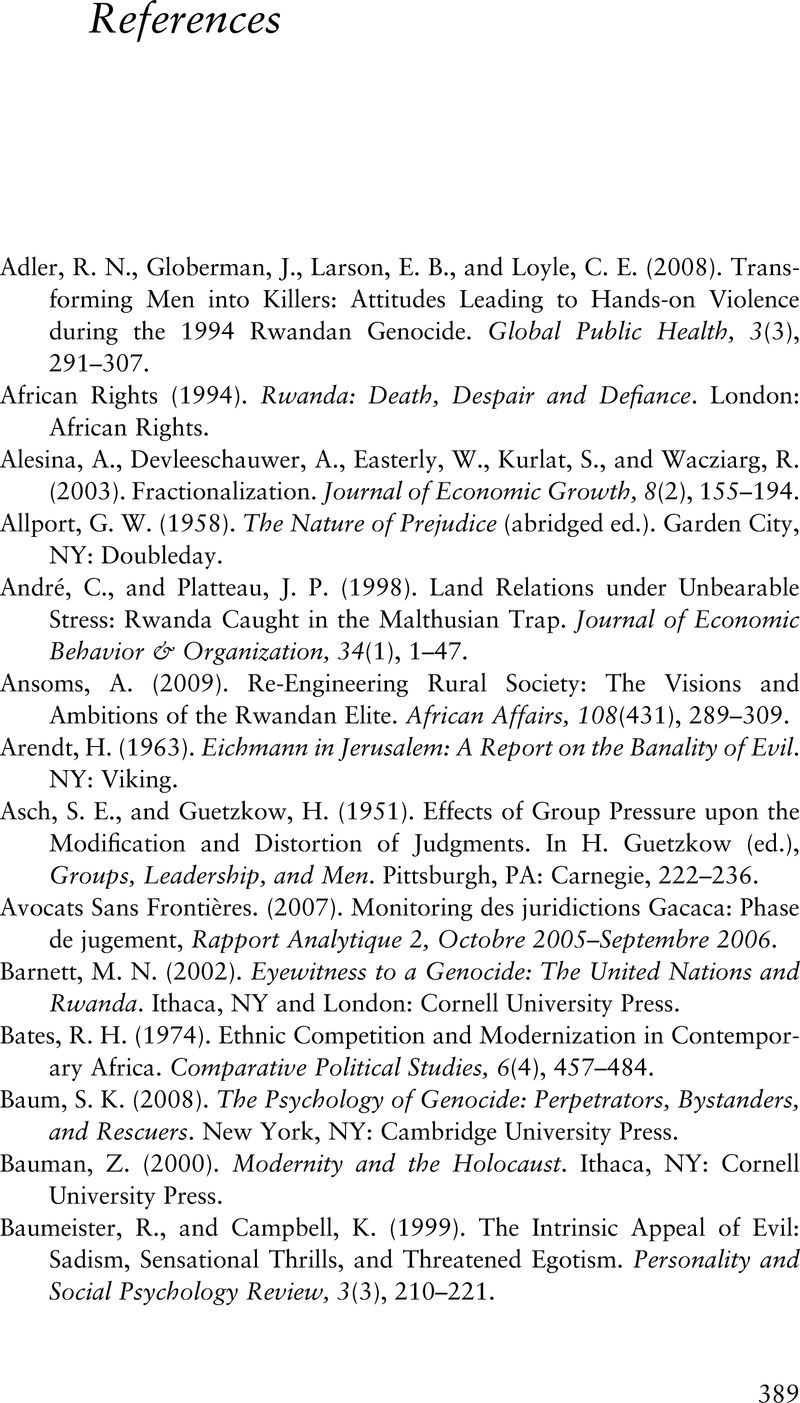Book contents
- The Path to Genocide in Rwanda
- African Studies Series
- The Path to Genocide in Rwanda
- Copyright page
- Contents
- Figures
- Tables
- Acknowledgements
- Abbreviations
- 1 What We Do and Do Not Know
- 2 An Extraordinary Baseline
- 3 Security: War-Time Threat
- 4 Threat and Opportunity: The Dangers of Freedom
- 5 Opportunity II: Death of the Nation’s Father
- 6 Authority: Rwanda’s Privatized and Powerful State
- 7 Why Some Killed and Others Did Not
- 8 Conclusion: Rwanda in Retrospect
- References
- Index
- African Studies Series
- References
References
Published online by Cambridge University Press: 26 October 2020
- The Path to Genocide in Rwanda
- African Studies Series
- The Path to Genocide in Rwanda
- Copyright page
- Contents
- Figures
- Tables
- Acknowledgements
- Abbreviations
- 1 What We Do and Do Not Know
- 2 An Extraordinary Baseline
- 3 Security: War-Time Threat
- 4 Threat and Opportunity: The Dangers of Freedom
- 5 Opportunity II: Death of the Nation’s Father
- 6 Authority: Rwanda’s Privatized and Powerful State
- 7 Why Some Killed and Others Did Not
- 8 Conclusion: Rwanda in Retrospect
- References
- Index
- African Studies Series
- References
Summary

- Type
- Chapter
- Information
- The Path to Genocide in RwandaSecurity, Opportunity, and Authority in an Ethnocratic State, pp. 389 - 406Publisher: Cambridge University PressPrint publication year: 2021

